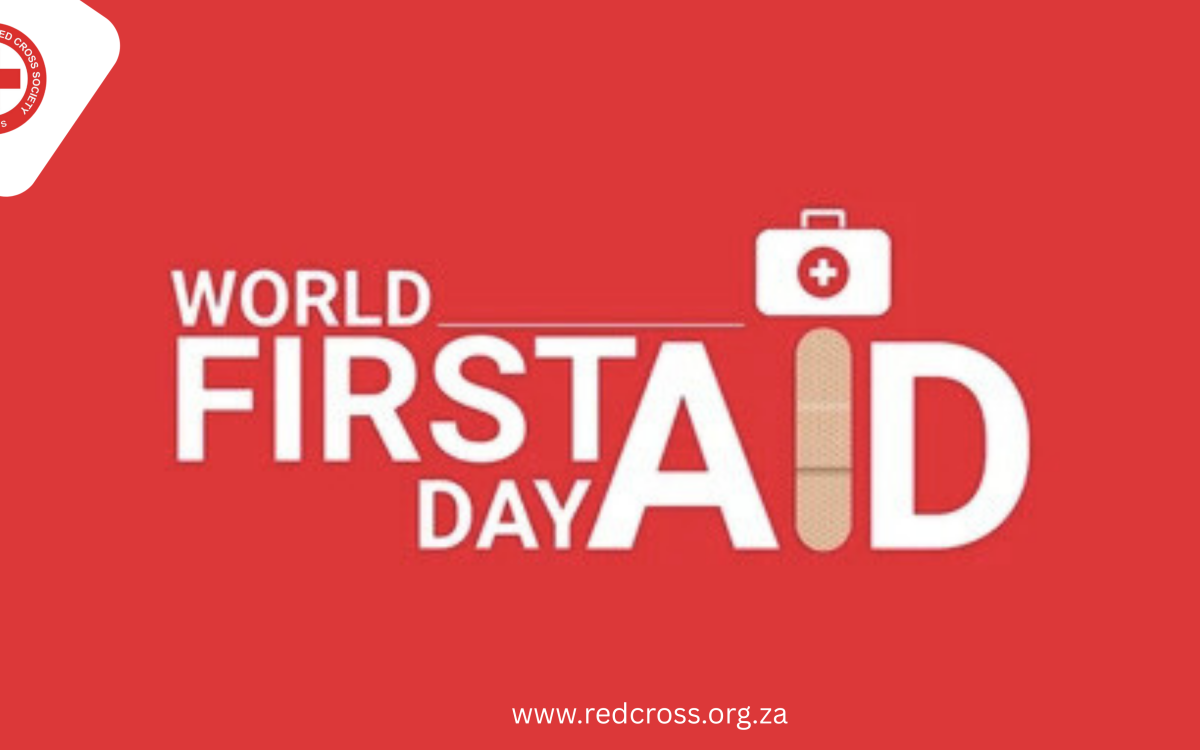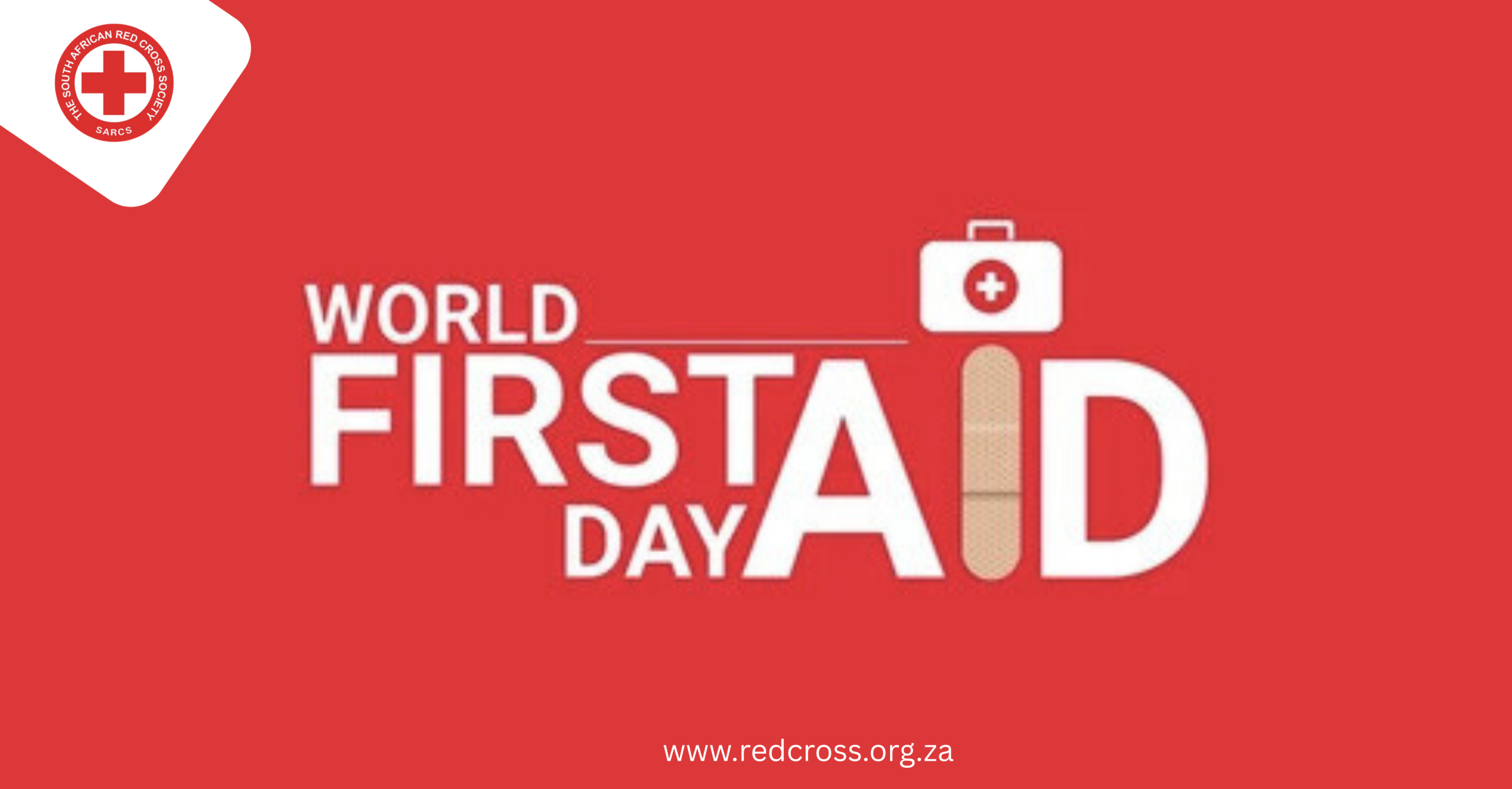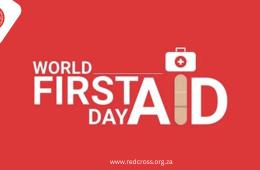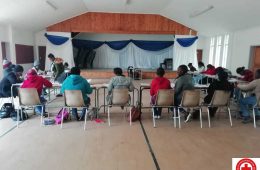
Each year, on the second Saturday of September, the world comes together to mark World First Aid Day. It is not just a calendar event. It is a moment to remind ourselves that the ability to save a life should not belong only to health professionals. It should be a skill every person holds, no matter their age, background or circumstance.
This year’s theme, First Aid and Climate Change, is timely. Across South Africa and globally, climate-related emergencies, from floods and fires to heatwaves and disease outbreaks, are no longer rare disruptions. They are becoming regular, often devastating occurrences, disproportionately affecting communities already facing structural vulnerabilities. In this context, first aid is not just a helpful skill, it is a critical form of frontline resilience. Localised responses, frequently grounded in indigenous knowledge systems and situated community practices, represent long-standing and adaptive engagements with climate variability (Muroyiwa, Masinda & Mushunje, 2022). Empowering people with life-saving knowledge is a matter of climate justice, one that the South African Red Cross (SARCS) takes seriously.
The Role of First Aid in Public Health
First aid is more than an emergency response. It is a public health tool. It helps to reduce the severity of injuries. It saves lives before professional help arrives. It gives people the confidence to help others in moments that matter.
In South Africa, where ambulance services are often delayed or limited, first aid plays an even bigger role. National targets suggest we need one ambulance for every ten thousand people. That means we should have at least six thousand two hundred and twenty-eight ambulances. But currently, there are just over four thousand in operation (MedicalBrief, 2024). Some provinces are far worse off. North West, for example, has only seventy-two ambulances, despite needing more than three hundred (BusinessLIVE, 2022). Gauteng has more vehicles, but many are not on the road due to staff shortages. Only about three hundred of their sixteen hundred ambulances are active at any one time (Daily Maverick, 2022).
In such situations, trained community members become the first to respond. A grandmother who knows how to treat a burn. A teacher who can stop bleeding. A youth volunteer who helps a peer having an asthma attack. These acts are powerful. They are often the difference between life and death.
Climate Change and the Rising Need for First Aid
As climate change accelerates, so too do its consequences, and not just in abstract environmental terms. The impacts are increasingly visceral, immediate, and, for many, life-threatening. Nowhere is this more evident than in South Africa, where climate-linked disasters such as floods are on the rise, putting vulnerable communities under mounting pressure. Climate change is increasing the number and severity of emergencies. When it floods, people slip, fall, or are swept away. During heatwaves, cases of dehydration, fainting, and heatstroke surge. Storms leave trails of injury. Fires force evacuations and destroy homes. With every climate-related event, the demand for people who can respond quickly and effectively grows more urgent because every second counts when lives are at risk.
South Africa has made important strides in preparing for these challenges. The Disaster Management Act 57 of 2002 remains a landmark piece of legislation, mandating that disaster risk reduction (DRR) be woven into every layer of government planning. Its alignment with global frameworks like the Hyogo and Sendai Frameworks stresses a commitment to emergency response and long-term resilience. In theory, it is a well-intentioned and carefully designed model. But theory alone does not hold back floodwaters, tame wildfires, or quench droughts.
The convergence of climate variability, rapid urbanisation, and socio-economic inequality is dramatically amplifying exposure to hydro-meteorological hazards (Cilliers, 2019). In many cases, the communities hardest hit are those least equipped to recover. Informal settlements often emerge in flood-prone areas, lacking basic infrastructure and formal support systems. When one looks at disasters through this lens, risk is no longer just about the hazard itself, but also about who is exposed and how vulnerable they are.
This reframing, from a hazard-centred to a vulnerability-centred approach, marks a fundamental shift in how practioners understand and respond to disaster risk. It demands a new kind of planning, one that is integrated, anticipatory, and above all, inclusive (Cilliers, 2019). Disasters, in this view, are not isolated events but symptoms of systemic breakdowns. Addressing them requires more than sandbags and sirens, it requires dismantling the inequalities that make some communities far more at risk than others.
It is against this backdrop where first aid is part of the National Society’s climate adaptation strategy. It allows communities to respond to disasters quickly and effectively. Put simply, it makes people more resilient.
The Emergency First Aid Responder programme in the Western Cape is one example. It trains community members to be first responders. Over the years, it has shown that local people, when trained and supported, can make a huge difference in the time before ambulances arrive (Wallis et al, 2022).
Capacity Building in a Warming, Unequal World
Historically, South Africa’s municipalities operated without a binding legal mandate to develop dedicated climate change adaptation (CCA) strategies, and disaster risk reduction (DRR) efforts were often fragmented or inconsistently implemented. Although the Disaster Management Act 57 of 2002 required municipalities to integrate DRR and some elements of CCA within their Disaster Management Plans, these obligations were broad and lacked the enforcement and clarity needed for meaningful, localised climate action.
This gap in legal obligation has had real consequences. Research reveals that many municipalities, particularly outside major metros, tend to conflate or neglect both CCA and DRR in practice (Matikinca, Nyamakura & Shackleton, 2024). Notably, municipalities in former homeland regions demonstrated more proactive engagement with adaptation strategies, such as promoting drought-resistant crops or investing in local economic resilience but these efforts were largely driven by context-specific vulnerabilities, not national policy coherence.
In the meantime, organisations like the South African Red Cross Society (SARCS) continue to fill critical gaps in local resilience-building. Through its training, advocacy, and grassroots engagement, SARCS plays an important intermediary role, embedding first aid, psychological support, and disaster preparedness directly into communities, especially those most exposed to climate-related hazards
SARCS Commitment to Training and Empowerment
SARCS believes that first aid should be for everyone. Through our Training Department, we deliver practical and accessible accredited training across all provinces. We work in schools, workplaces, community centres and informal settlements. We train learners, teachers, caregivers, volunteers and workers.
Our training focuses on real-life scenarios. It teaches people how to remain calm and act. How to help someone who is bleeding. How to treat a burn. How to manage shock or choking. How to support someone who has collapsed. We also provide psychological first aid training to help communities support each other during distressing events.
This training empowers people. It builds confidence. It strengthens community health literacy. And it reduces pressure on emergency services and clinics.
Public Health Impact of First Aid
From a public health perspective, the benefits of widespread first aid knowledge are clear
• It reduces deaths and long-term injury
• It lowers the demand for emergency rooms and ambulances
• It improves early response during outbreaks, fires or accidents
• It strengthens mental health support during disasters
• It promotes health equity by giving people in low-resource settings the tools to act
• It enhances disaster readiness in a changing climate
First aid also creates a sense of shared responsibility. It connects people. It helps build trust and solidarity. It turns bystanders into active helpers.
A Call to Action
On World First Aid Day 2025, we call on all sectors of society to play a role
• Schools must include first aid in the curriculum
• Workplaces should offer basic training to staff
• Municipalities must invest in first responder networks
• Youth groups and NGOs can lead peer-to-peer learning
• Donors and government should treat first aid training as a public health priority
• Humanitarian actors must advocate for the integration of indigenous knowledge and local climate realities into programmes.
We cannot wait for help to come from outside. We must prepare people to act from within.
Conclusion
First aid is a humanitarian act. It is about dignity. It is about care.
It is about giving people the ability to respond when someone around them is in need. Whether in a classroom, a flooded township, or a crowded taxi rank, knowing what to do can save a life.
In a country where ambulances may take an hour to arrive. In a world where disasters are increasing. In communities where professional care is far away. First aid becomes the frontline of health and survival.
We invite everyone to learn. To teach. To prepare. Let us build a South Africa where more people are ready to help. Because the person who saves your life may not wear a uniform. It may be someone nearby who simply knew what to do.
For training or more information, visit www.redcross.org.za or contact your nearest SARCS branches
References
BusinessLIVE 2022. Provinces have half the ambulances they need
https://www.businesslive.co.za/bd/national/health/2022-12-05-provinces-have-half-the-ambulances-they-need-minister-admits/
Daily Maverick 2022. Only 300 of Gauteng’s ambulances are on the road
https://www.dailymaverick.co.za/article/2022-06-02-only-300-of-gautengs-1081-operational-ambulances-are-on-the-road-due-to-staff-shortages/
Matikinca, P., Nyamakura, B. and Shackleton, S., 2024. Climate change adaptation and disaster risk reduction in South Africa’s local municipal plans. South African Journal of Science, 120(7-8), pp.1-9. Climate change adaptation and disaster risk reduction in South Africa’s local municipal plans-Web of Science Core Collection
MedicalBrief 2024. Emergency services desperate as shortages cripple sector
https://www.medicalbrief.co.za/emergency-services-desperate-as-shortages-cripple-sector/
Muroyiwa, B., Masinda, N. and Mushunje, A., 2022. Smallholder farmers’ adaptation strategies to mitigate the effect of drought on maize production in OR Tambo District municipality. African Journal of Science, Technology, Innovation and Development, 14(2), pp.459-471. Smallholder farmers’ adaptation strategies to mitigate the effect of drought on maize production in OR Tambo District municipality-Web of Science Core Collection
Wallis L et al 2022. Community-based emergency first aid responder model
https://www.sciencedirect.com/science/article/pii/S2211419X22000428




